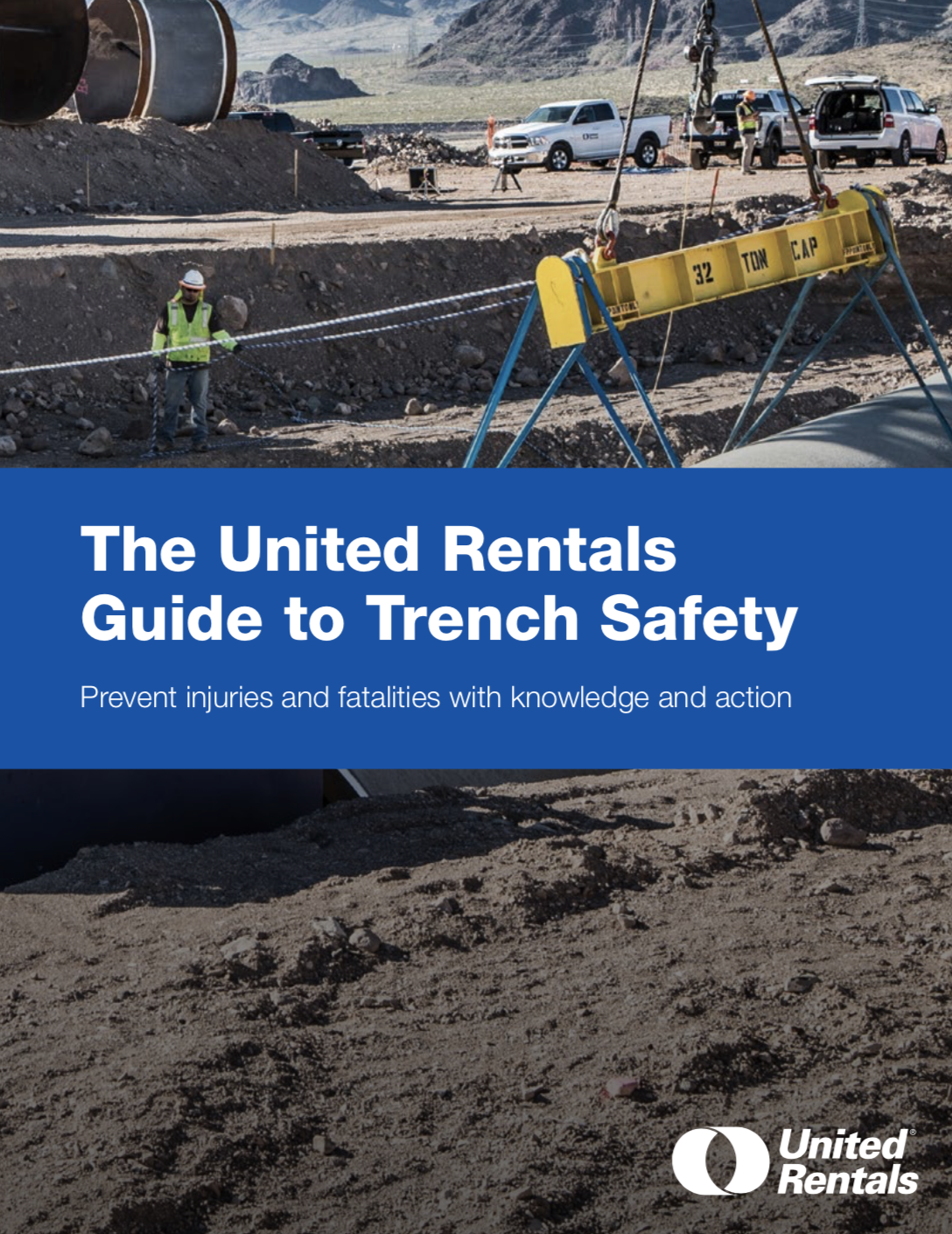A United Rentals trench safety expert provides key insights.
OSHA requires that contractors install protective systems whenever they’re excavating at a depth of 5 feet or more. With four types of viable, OSHA-approved protective solutions available — sloping, benching, shoring and shielding — contractors must understand how to choose the most effective system for a particular jobsite.
Representatives of United Rentals Trench Safety Division ask their customers these five questions when assisting them in their selection of trench protection.
1. Why are you excavating?
“This helps determine the size of the protective system that a contractor might want to use,” said Chad Lindsley, United Rentals Trench Safety. When contractors are installing a large system like an electrical vault, they will likely choose a different protective system than someone installing a long, linear run of gas pipe or water main. If you’re installing a large, pre-cast structure and you want to crane it in and set it down in the excavation while protecting your workers, “you are going to want a lot of clear span in which to work. You wouldn’t want a lot of cross-braces in there because they would be in your way,” Lindsley explained.
2. What’s the size of the excavation?
The width, depth and length will impact the size of the protective system you need. “Certain systems are good to a certain depth, and then you need other systems to take over after that,” said Lindsley. For shallower installations, contractors will typically use lightweight aluminum trench boxes, modular trench boxes or lightweight vertical hydraulic shoring. Deeper excavations would require heavy-duty steel trench boxes, slide rail systems, bracing with a beam, plate or sheeting, or hydraulic bracing.
3. Are there any adjacent structures, surface encumbrances, groundwater issues or overhead obstructions?
“Some shoring systems are installed using a crane or an excavator, so if there’s an overhead obstruction we might not be able to set up one of those types of systems,” said Lindsley. For a shallow excavation, a contractor might choose a light weight aluminum protection system that could be installed by hand. For deeper or larger excavations, contractors might have to move the obstruction.
4. What types of soils are you working in?
OSHA classifies soils as either stable rock or Type A, Type B or Type C soil.
“With some protective systems such as sloping, OSHA has pre-determined angles for sloping and benching systems based on the type of soil. So if you know your soil, then you know what angle you need,” said Lindsley. Knowing the type of soil is essential when it comes to the depth ratings for various types of protective equipment. “I might have a steel trench box that in B soil is rated to 20 feet in the ground but in C soil, because it is a poorer soil, it might only be rated to 16 feet. So knowing your soil determines what you can and cannot do with shielding and shoring equipment,” said Lindsley.
“We also offer a unique service. We have our own in-house engineering department where we can do site-specific engineered trenching protection systems that utilize our rental equipment and customer-owned equipment."
5. What type of working area do you have on your jobsite?
The use of sloping or benching systems often requires a mass excavation of dirt, and that means you’ll need a lot of area in which to store it. “If you’re working downtown and you have all of these buildings and roads around you, the sloping and benching protective systems usually won’t work because there’s not enough room,” said Lindsley. “If you’re digging or excavating near a building, you would want a positive shoring system in there not only to protect your workers, which is most important, but also to prevent any ground movement that could affect the adjacent buildings.”
Training a “competent person”
Per OSHA, every excavation requires a competent person who has been trained to identify the existing and predictable hazards in the surrounding area and who is authorized to take prompt corrective actions to eliminate them. This person must inspect the excavation and protective systems daily, and after any weather events that could impact the excavation (high winds, rain, etc.).
United Academy, the training branch of United Rentals, offers competent person excavation safety classes that teach participants about the different types of trench protection systems and when they can and can’t be used. The classes also cover the various types of hazards a construction team can encounter during an excavation and ways to address them.
RELATED: Taking Trench Safety Seriously
If you’re not certain which type of protective system you need, the trench staff at United Rentals can provide assistance. They help contractors all over the country determine the right protective systems for their excavation.
United Rentals is also a resource if your excavation requires an engineered solution.
“We also offer a unique service. We have our own in-house engineering department where we can do site-specific engineered trenching protection systems that utilize our rental equipment and customer-owned equipment,” said Lindsley. “That gives our customers access to many other shoring and shielding systems that they wouldn’t be able to keep in their own owned fleet because the utilization would be poor. We design systems that are OSHA-compliant, that help contractors be productive and most important, that help ensure that everyone working in the excavation is safe.”
Download the United Rentals Guide to Trench Safety

Freelance writer Mary Lou Jay writes about business and technical developments in a variety of industries. She has been covering residential and commercial construction for more than 25 years.


